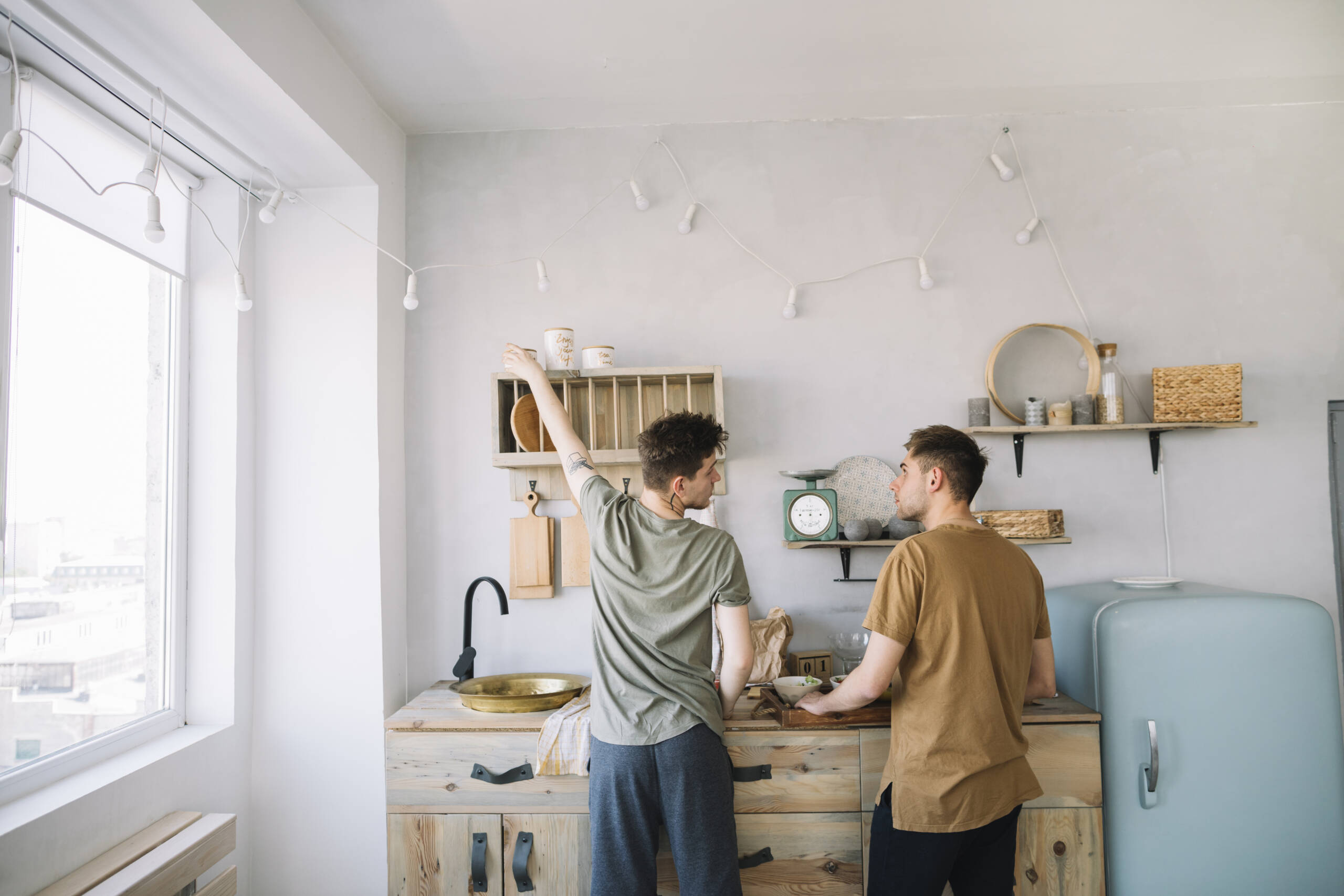Have you ever walked into someone’s kitchen and thought, “Wow, this feels like the heart of the home?” That’s no coincidence. Kitchens are where we cook up meals, chat about our day, and sneak those midnight snacks. Whether you’re whipping up avocado toast or meal-prepping for the week, the design and layout of your kitchen directly impact how you live, work, and vibe. So, if you’re thinking of building or redesigning your kitchen, it’s time to give it some serious thought—because how you build your kitchen really matters.
Building a Kitchen
Building a kitchen isn’t just about slapping together countertops and cabinets. It’s about crafting a space that works for you. Before you grab the hammer, let’s talk essentials. What’s the kitchen’s primary function? Sure, cooking—duh. But it’s also a space where you entertain, connect, and maybe even work (shout out to all the kitchen-table laptop warriors). Start by planning around the essentials: layout, storage, and flow.
- Layout is Everything – The infamous “kitchen triangle” (the relationship between your sink, stove, and fridge) is a classic design rule for a reason. You’ll want to keep these key areas close enough for easy access but spaced apart to avoid cramped cooking zones. Think of it like a culinary dance floor where you can move freely without tripping over your partner.
- Storage, Storage, Storage – Ever wonder why some kitchens look like a war zone after making one meal? Lack of storage. Make sure to include plenty of cabinets, drawers, and shelves so your kitchen gadgets, pots, and pans have a home. And don’t forget about vertical storage—use those walls!
- Flow for Days – Your kitchen needs to feel natural. If it’s too cramped, cooking becomes stressful. Too spacious, and you’ll feel like you’re running a marathon between the stove and sink. Pay attention to how people will move through the space—whether they’re grabbing a drink from the fridge or setting the table for a big dinner.
Build Your Own Kitchen
Thinking of going full DIY? Love that energy! Building your own kitchen isn’t impossible, but it’s definitely a project that requires planning, patience, and the right tools. Here’s a basic game plan for how to go from blueprint to reality.
- Start with a Vision – What vibe are you going for? Modern minimalism or cozy farmhouse? Your kitchen should reflect your style. Get inspired by mood boards, Pinterest, or even scrolling through Instagram. Once you’ve locked in your aesthetic, it’s time to think about materials.
- Material World – Cabinets, countertops, floors—oh my! When building your kitchen, the materials you choose will define the look and feel of the space. Hardwood floors are classic but can be pricey, while laminate counters are more budget-friendly but might not last as long. And don’t even get me started on cabinets—do you want custom-built wood or sleek, modern laminates? Do your research on durability, cost, and how each material fits into your vision.
- Measure Twice, Cut Once – One of the cardinal rules of building anything is to get your measurements right. Seriously. Before cutting a single board or installing that countertop, make sure every inch is accounted for. The last thing you want is a cabinet door that bangs into your fridge every time you open it.
- Consider Professional Help – If you’ve got the DIY spirit but need a bit of a push, consider hiring a professional for some of the heavy lifting. Maybe you’re fine with assembling IKEA cabinets, but running electrical wiring and plumbing is a bit out of your wheelhouse. Don’t hesitate to bring in help where needed—it’ll save you from future headaches.
How to Make a Kitchen
Creating a kitchen from scratch or giving it a facelift doesn’t have to be overwhelming. Whether you’re working with an architect or doing it yourself, there’s a formula that can make the process more manageable.
- The Blueprint – Before anything happens, sit down with a blueprint. This includes measurements of the room, where your plumbing and electrical outlets are, and how everything will be laid out. This plan is your kitchen bible, and it’ll save you a ton of frustration later on. If you’re not sure how to make one, many online platforms (like SketchUp) offer tools to create a 3D kitchen model.
- Kitchen Zones – Your kitchen should be split into zones—prep, cooking, cleaning, and storage. Think of it like a kitchen map. The prep zone is where all the chopping, mixing, and prepping happens (hello, cutting boards and mixers). The cooking zone is for, well, cooking—stove, oven, and microwave, all in one central spot. The cleaning zone revolves around your sink and dishwasher, while storage is all about having space to stash your dry goods and kitchen tools.
- Power and Plumbing – A kitchen without proper electrical outlets or water lines is a disaster waiting to happen. Make sure you know where your major appliances will be located so you can place outlets accordingly. And let’s talk water—your sink, dishwasher, and fridge with that fancy ice-maker need proper plumbing.
Kitchen Building Tips
Now, you’re ready to make the magic happen. But before you go full HGTV mode, here are a few kitchen-building tips to keep in mind.
- Don’t Skimp on Lighting – Lighting can make or break a kitchen. You need task lighting for when you’re chopping veggies and mood lighting for when you’re entertaining guests. Go for a mix of recessed lighting, under-cabinet lights, and maybe even a funky pendant lamp over the island. You’ll want the light to be bright, but also warm enough to create a cozy atmosphere.
- Maximize Counter Space – Counter space is prime real estate in a kitchen. Make sure to give yourself plenty of it, especially around your cooking and prep areas. Kitchen islands are a great way to add extra counter space without crowding the room.
- Go Easy on Trends – That neon-colored backsplash may seem like a great idea now, but will you still love it five years down the road? Stick to classic, timeless designs for your major pieces like cabinets and countertops, and save the trendy stuff for things that are easy to swap out, like paint or accessories.
- The Kitchen Triangle Rule (Again!) – I’m bringing this up one more time because it’s that important. Keep your sink, stove, and fridge close, but not too close. It’ll make cooking so much easier.
- Think About Ventilation – Cooking creates heat, steam, and smells (hello, garlic), so a proper ventilation system is a must. Install a good-quality range hood over your stove to keep the air fresh and your kitchen smelling like home, not last night’s dinner.
Building with the Future in Mind
When designing your kitchen, think long-term. Your kitchen isn’t just for today; it’s for tomorrow’s family dinners, holiday feasts, and impromptu pizza parties. Invest in quality where it counts, like durable countertops and solid cabinetry that will withstand the test of time.
Also, consider integrating smart technology—voice-activated faucets, energy-efficient appliances, and smart ovens that make cooking more intuitive and eco-friendly. It’s all about designing a space that evolves with you, meeting your changing needs while staying functional, stylish, and sustainable for the long haul.
Using eco-friendly materials like recycled countertops or energy-efficient appliances isn’t just good for the planet—it can save you money in the long run too.




Leave a Comment